
Find Your Flow: Tips and Strategies for IT Productivity
Every business requires productivity from its teams, and the IT department is no exception. By improving IT productivity, organizations can save costs, increase output, and become more competitive.
Executive Summary:
Every business requires productivity from its teams, and the IT department is no exception. By improving IT productivity, organizations can save costs, increase output, and become more competitive.
Several key factors can help improve IT productivity, including:
- The use of appropriate tools and technologies
- Effective communication and collaboration
- Clear goals and objectives
- A company culture that promotes continuous learning and improvement.
In this article, we will explore these factors in more detail and discuss how organizations can track relevant metrics and use productivity tools to ensure that their IT department is operating at maximum efficiency.
What Is Productivity and Why Is It Important
Productivity is a measure of the efficiency of a person or a team in converting inputs into useful outputs. It is a business factor that determines how much can be produced with an allocated number of resources. So higher productivity means that more can be produced with the same amount of input, which can lead to lower costs and increased competitiveness.
With efficient, increased productivity comes an increase in customer satisfaction and profitability. Which in return will have a positive impact on your team morale.
But it doesn’t stop there. Here are a few other reasons why outstanding productivity is important:
- At its core, productivity is about using your time and resources wisely to achieve your goals. It’s like a superpower for getting stuff done. Imagine being able to complete a project in half the time it would normally take you. Talk about a time-saver!
- Improved productivity can lead to better time management skills, which means you’ll have more free time to do the things you love (like watching cat videos on YouTube). That’s a win-win in our book.
- On a larger scale, productivity is important for the economy. When businesses are more productive, they can create more value for their customers and be more competitive in the market. This can lead to job growth and overall prosperity. So, in a way, productivity is kind of like the superhero that saves the day for the economy.
- Being productive can also help you stand out in your career. Employers love to see employees who can get things done efficiently and effectively. Imagine being the go-to person in your office for getting things done. You’d be like the Batman of your workplace!
So how do you unleash the productive superheroes in your team (and yourself)?
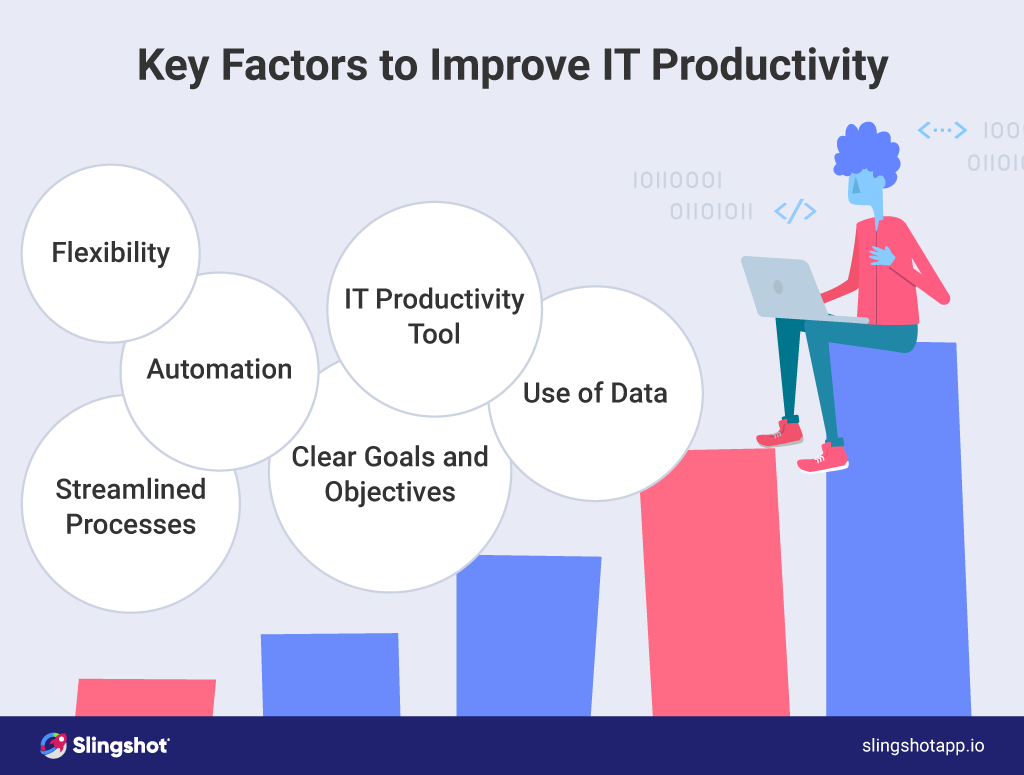
Key Factors to Improve IT Productivity and Efficiency
Time to have the real talk – what can you do to improve your productivity and the efficiency of your IT team’s work – starting right now.
Improving your IT productivity and efficiency happens through:
- Streamlined processes: Identifying and streamlining repetitive tasks and processes can help reduce the time and effort required to complete them.
- Automation: Using automation tools and technologies can help reduce the need for manual tasks, freeing up IT staff to focus on more complex and strategic projects.
- Collaboration: Encouraging effective and constant collaboration and communication within the IT team, as well as with other departments, can help improve efficiency and productivity.
- Flexibility: Allowing IT staff to work flexible hours or remotely can help improve work-life balance and increase productivity.
- Clear goals and objectives: Providing IT staff with clear goals, expected outcomes, plans, briefs, and all the information they need to align their work with the company objectives
- Use of a suitable IT productivity tool: To always keep your IT team focused, find one digital workplace for them to contain all their daily communication, data, and files, so they can work easily without switching apps. Such a tool also provides invaluable alignment between all departments in your company, as well as external partners, decision-makers, and clients, who can all be working side by side in this app.
- Use of Data: Achieving an increase in productivity can also happen faster with the utilizations of data to drive insights and actions. When you are using data to make and drive your decisions you avoid rework and time spent finding answers to your questions.
IT Efficiency Metrics to Track
Let us be entirely clear: data is a big part of productivity, and your IT team should rely heavily on key IT efficiency metrics – to track, view, share and discuss consistently, so you can see where you progress and where you need to step on the pedal a little bit.
Here are some of the key metrics you should track to measure the productivity and effectiveness of your IT operations:
- Time to complete tasks: This metric measures the time it takes to complete a task or project, which can help identify bottlenecks and inefficiencies in the process.
- Utilization: This metric measures the percentage of time that IT staff are actively working on tasks or projects. A low utilization rate may indicate that staff is not being used effectively.
- First-call resolution rate: This metric measures the percentage of support calls that are resolved on the first attempt. A high first-call resolution rate can indicate that IT staff can effectively troubleshoot and resolve issues.
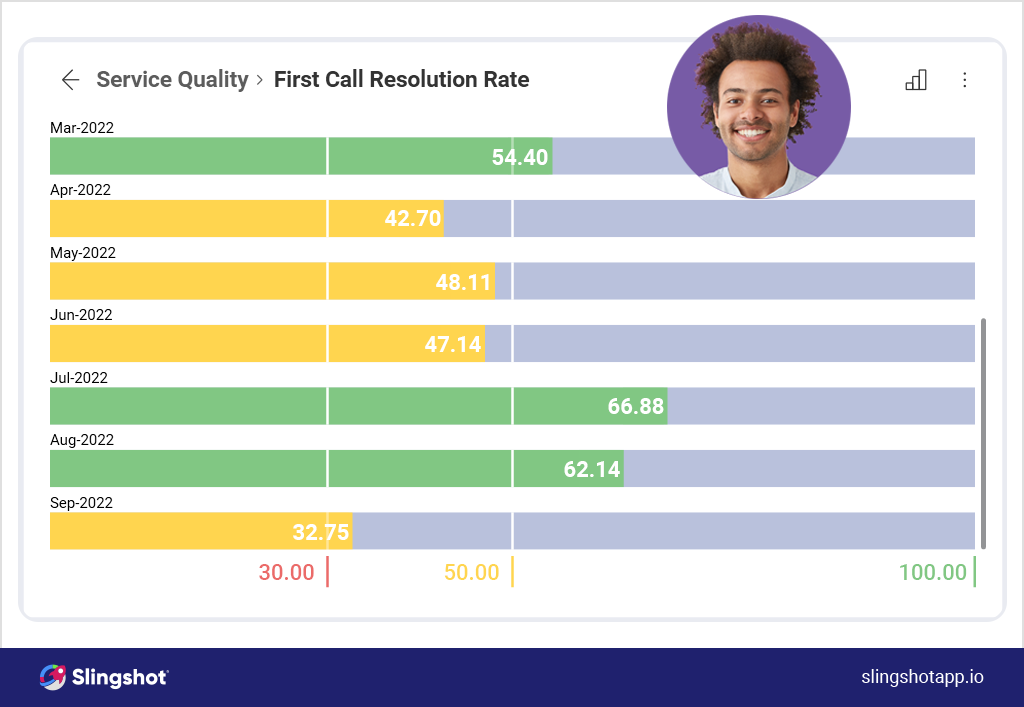
- Mean time to repair: This metric measures the average time it takes to repair a problem or issue. A low mean time to repair can indicate that IT staff can effectively troubleshoot and resolve issues promptly.
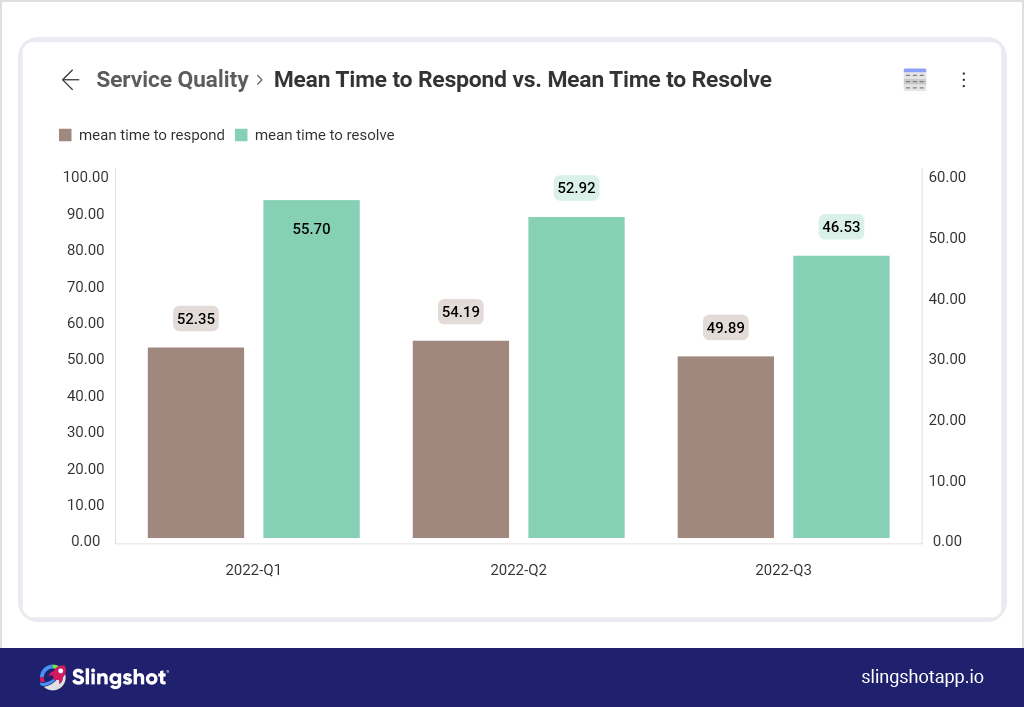
- Project completion rate: This metric measures the percentage of IT projects that are completed on time and within budget. A high project completion rate can for instance indicate that IT staff can effectively plan and execute projects.
- Customer Satisfaction: This metric measures the level of satisfaction that users or customers have with the IT service or support they receive. A high customer satisfaction rating can indicate that IT staff are providing high-quality service.
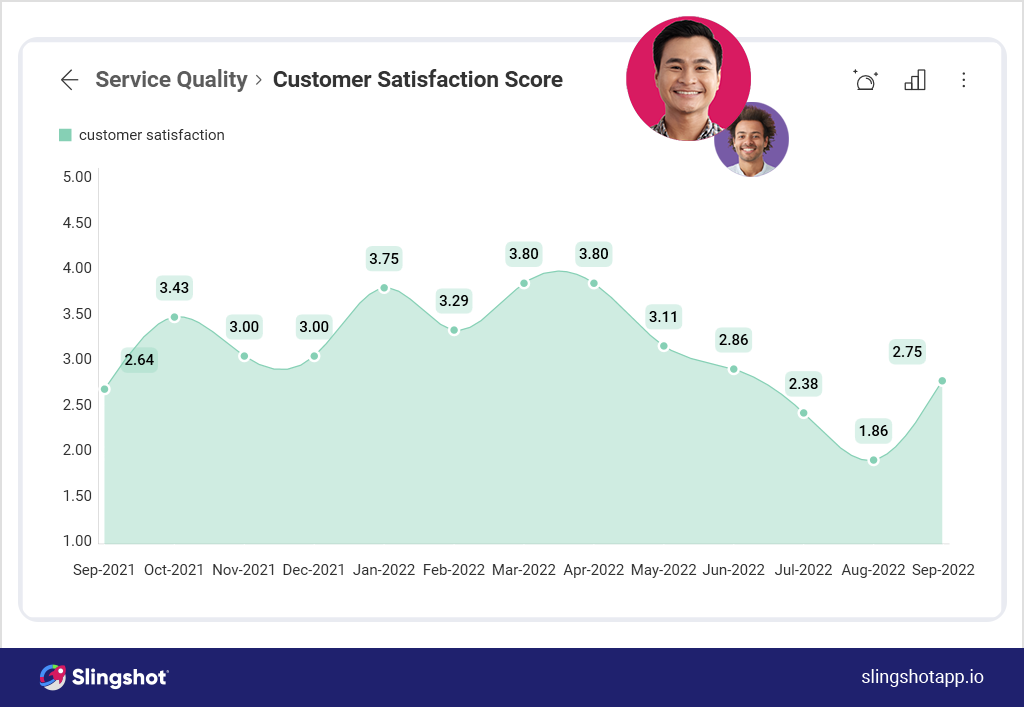
- Service availability and system performance (CPU/Memory/Disk) over time: These are important to track since they directly impact the user experience and the ability of the system to perform its intended functions. If a service is unavailable, users will be unable to access it, which can lead to frustration and decreased productivity.
- Graphing Cloud Costs : This metric allows IT professionals to track and understand their organization’s spending on cloud resources. This is especially important in the cloud, where costs can vary significantly based on a variety of factors, including the type and quantity of resources being used, the length of time they are used, and the specific pricing plans and discounts that have been negotiated. By graphing cloud costs over time, IT professionals can identify trends and patterns in their organization’s spending, which can help them make informed decisions about how to optimize their use of cloud resources to reduce costs.
So now that we’ve established that IT data is your friend, let’s see how to bring it all together with the rest of your digital ecosystem – your collaboration, key files, and projects – to boost productivity.
What You Should Be Looking For in an It Productivity Tool
Choosing the IT productivity tool that will make your team’s lives easier and your outcomes soaring is an important one. And we can best do that by answering this one question: What you should be looking for in your IT productivity tool?
There are several key features and capabilities that you should look for in an IT productivity tool, so you find productivity faster.
- Easy to use: Choose a tool that is easy for your team to use and should not require extensive training or support to get up and running.
- Strong collaboration Capabilities: Your IT team’s tool should allow team members, as well as other departments, outside collaborators, partners, and clients, to easily collaborate and communicate, in whatever location they are
- Data Analytics: Like we said, data is there to help productivity. S, what’s easier than consuming data in beautiful dashboards that allow you to see the full story in one view?
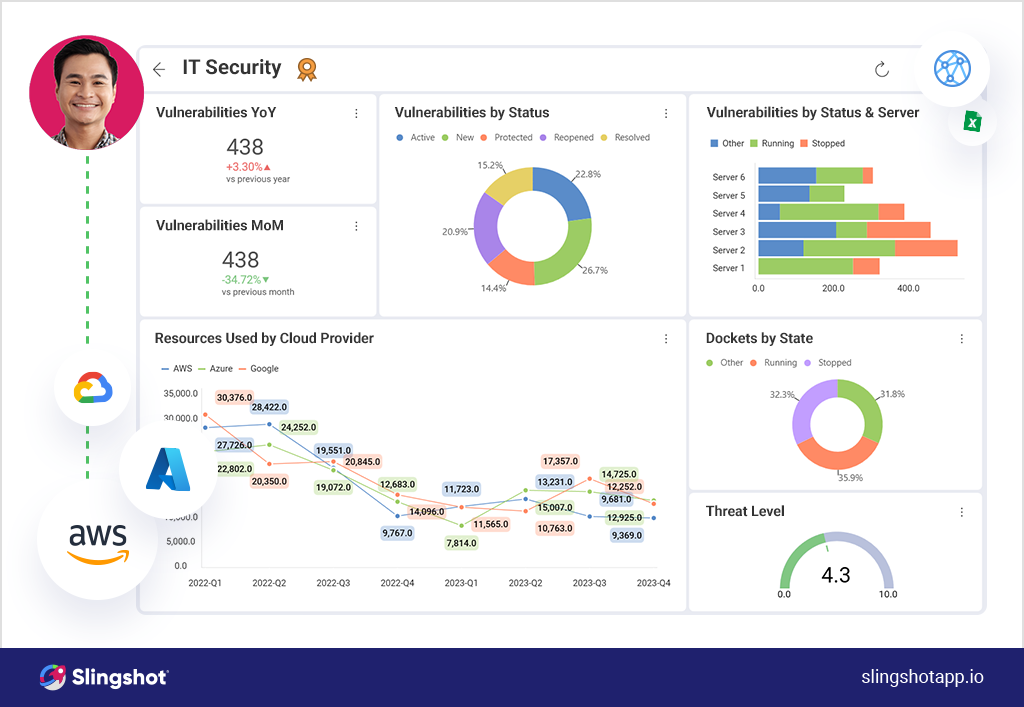
- Files: Keep everything in one place, with key documents and most updated files pinned from a cloud provider or uploaded in the app.
- Integrations: The tool should integrate with other tools and systems that your team uses, such as project management software or customer relationship management systems.
- Security: The tool should have robust security measures in place to protect sensitive data and prevent unauthorized access.
And most importantly the solution of your choice should have all the above features in one app so you are not wasting time jumping from tool to tool. Worker smarter, not harder means spending your time on the things that matter.
So, if you’re now ready to take the jump, take a look at Slingshot – the all-in-one digital workplace that combines data analytics, project management, file management, and team chat to create a seamless workflow for all IT teams. Workspaces can be created to organize teams, projects, and departments, and within each workspace, you have access to discussions, key files, data analytics, projects, and information management, all without the need to switch between apps.
Additionally, Slingshot’s data-driven features allow you to pull reports from multiple sources and create comprehensive dashboards to track the progress of any campaign or project. These dashboards can be easily created with a few clicks and shared with your team, or added to a data catalog where all organizational data can be easily accessed. Your IT team can also use these dashboards to track key performance indicators and quickly turn insights into actions.
To see for yourself, start your free trial right now!
Ready to grow your business 10x with AI decision-making?
Request a Free Demo of SlingshotSHARE THIS POST




 Return to Blog
Return to Blog